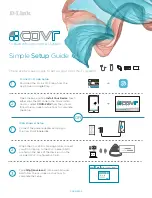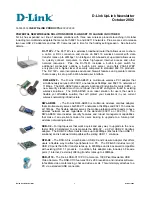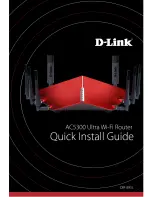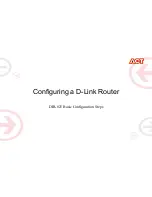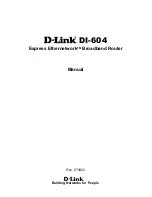
NINA-B4 series - System integration manual
UBX-19052230 - R06
Design-in
Page 16 of 45
C1-Public
For further information about current consumption and other performance data, see also the
electrical specifications in respective product datasheet [2][3].
It is best practice to include bypass capacitors on the supply rails close to the
NINA-B4 series module. Depending on the design of the power routing on the host system,
capacitance might not be needed.
2.2.3.2
Switched Mode Power Supply
A Switched Mode Power Supply (SMPS) is ideal in situations where the available primary supply
source has more than a moderately higher value than the operating supply voltage of the module. An
SMPS minimizes the amount of current drawn from the main supply and optimizes power efficiency
in the final application design.
⚠
When using an SMPS, ensure that the AC voltage ripple at switching frequency is kept as low as
possible. The layout design must minimize impact of high frequency ringing.
2.2.3.3
Low Drop Out (LDO) regulator
An LDO linear regulator provides a convenient primary supply option when the voltage difference
between the main supply and module VCC is reasonably small. The benefit of an LDO source over
SMPS is that an LDO is simpler to integrate and does not generate switching noise. However, with a
larger voltage difference, the superior efficiency of an SMPS converter provides less heat dissipation
and a longer operating time in battery-powered products.
As a contingency against “latch up”, include an over-current limiter to protect the module from
electrical over stress (EOS). A LDO or SMPS will serve this purpose.
2.3
Antenna interface
To optimize the radiated performance of the final product, the selection and placement of both the
module and antenna must be chosen with due regard to the mechanical structure and electrical
design of the product. To avoid later redesigns, it is important to decide the positioning of these
components at an early phase of the product design.
Carefully consider the placement of an embedded antenna in NINA-B4x6, or an external antenna
(connected through SMD assembly or RF connector) in NINA-B4x0 and NINA-B4x1.
Choose a module variant that supports an external antenna if the product includes a metal product
enclosure – or if any of the layout considerations for integrating an internal PCB trace antenna into
the design (see section 2.3.2.1) prove impractical.
•
NINA-B4x0
modules include a U.FL connector for connecting an external antenna. Some antennas
connect directly to the U.FL, while others connect through a short U.FL or reversed polarity SMA
adapter cable.
o
Antennas with SMD connections, either reverse-polarity SMA connectors or U.FL connectors,
are radio tested and verified against regulatory FCC, IC, RED, and MIC standards.
o
Antennas with SMA connectors are radio tested and verified against regulatory RED and MIC
radio tests, but not against FCC or IC standards.
•
NINA-B4x1
modules include an ANT pad for connecting an external antenna. The antenna can be
either an external SMD antenna or an antenna that is connected through an externally
assembled U.FL or SMA connector. Both integrations are described in sections 2.3.1.1 and
2.3.1.2, respectively.
•
NINA-B4x6
modules include an embedded PCB Niche antenna. See section 2.3.2 for design-in
information.
A list of u-blox-approved external antennas, together with regulatory information for NINA-B4x0 and
NINA-B4x1, can be found in the NINA-B4 series certification application note [8].

































